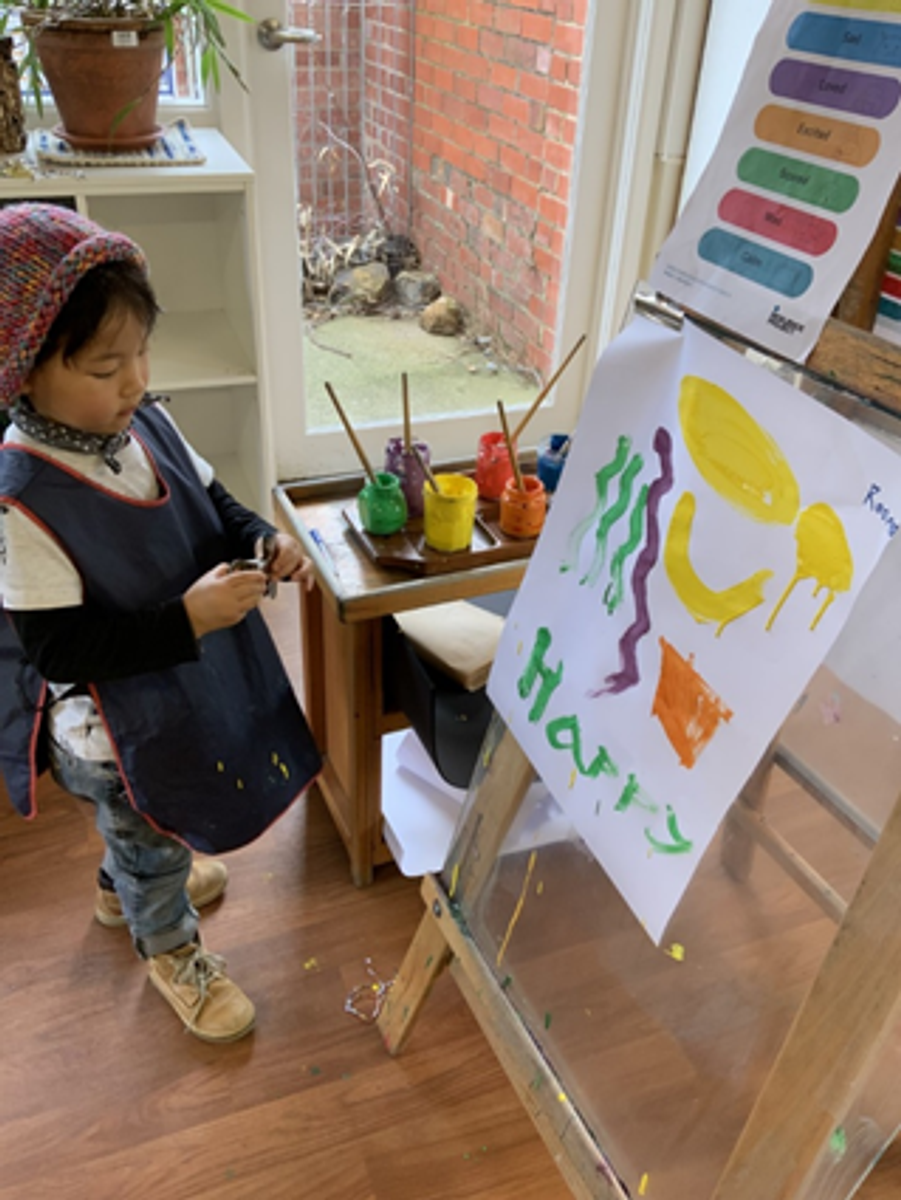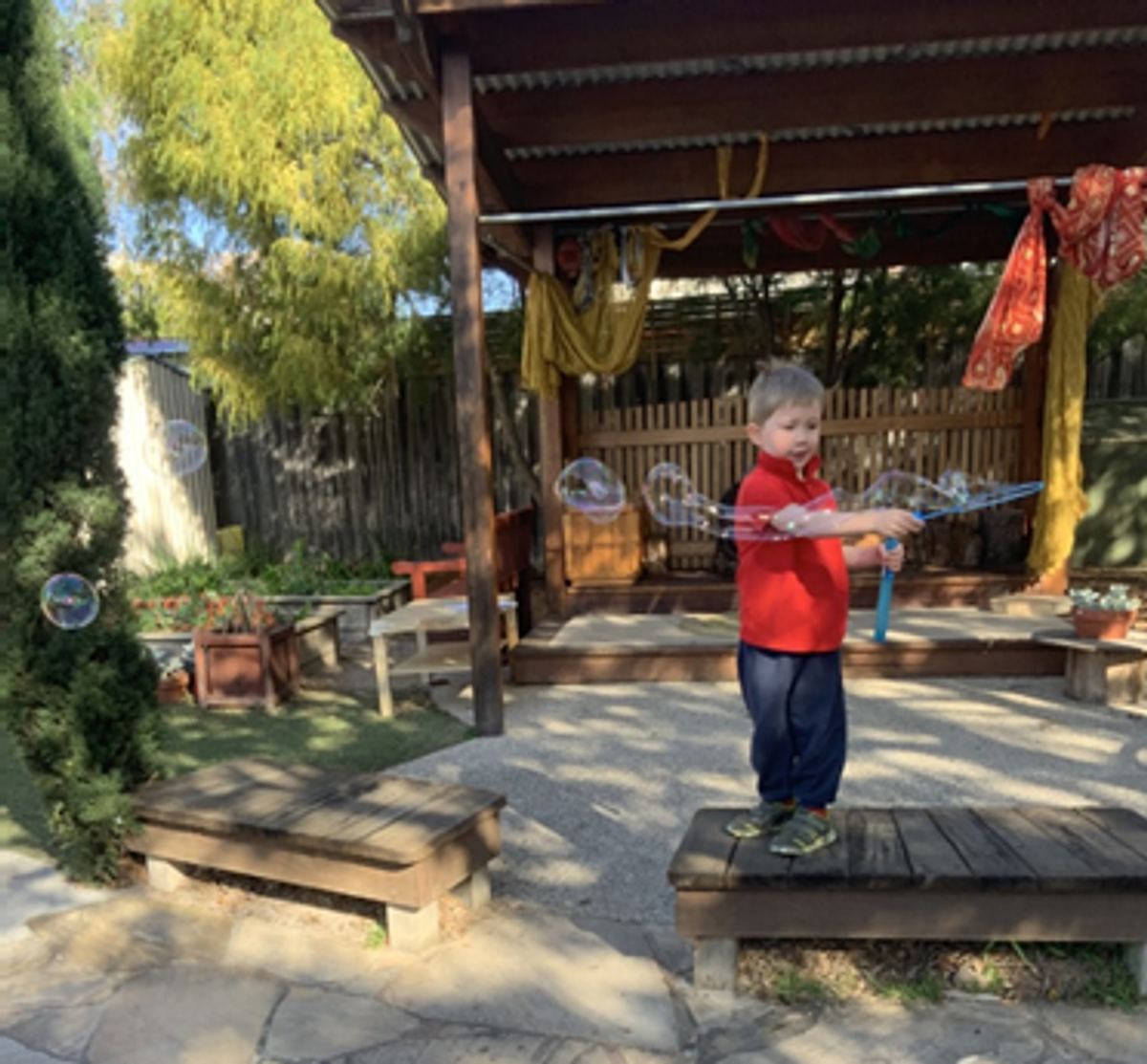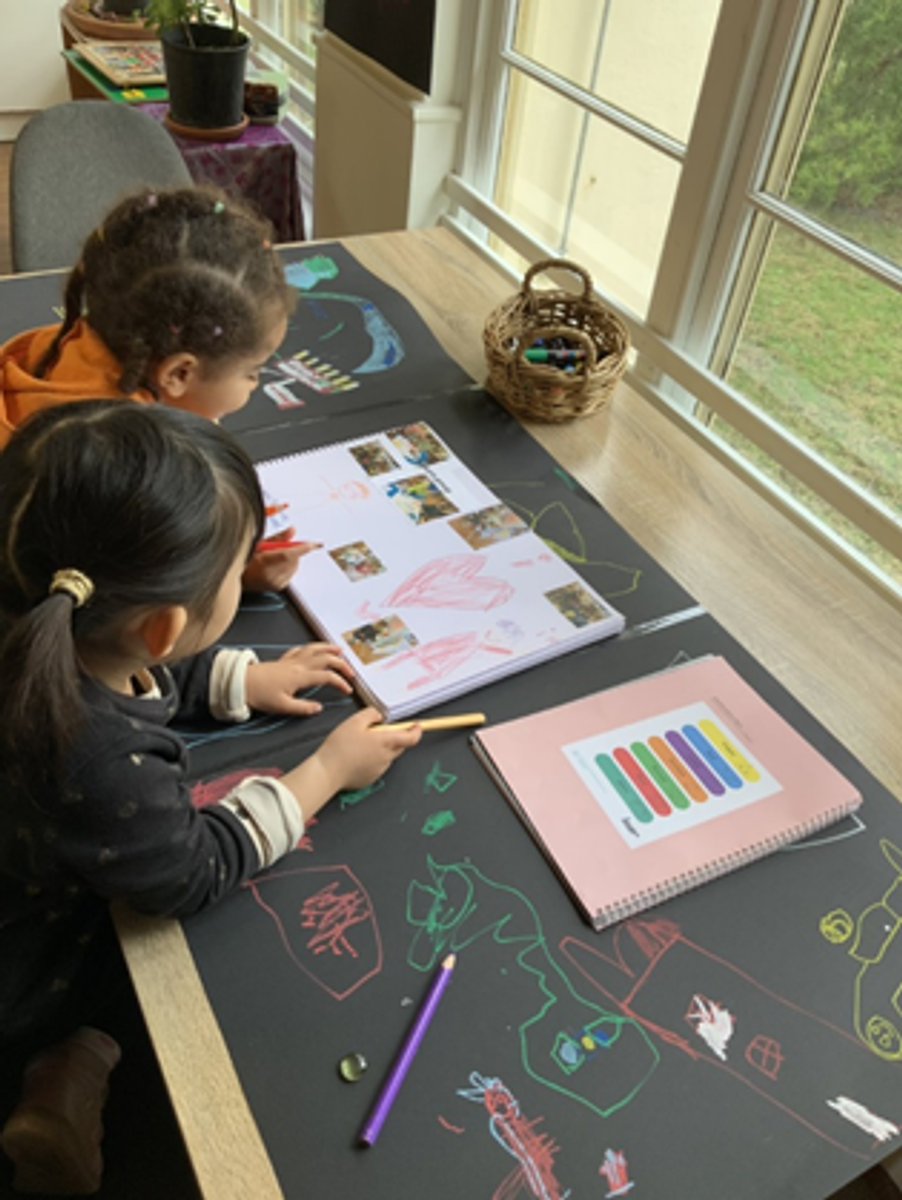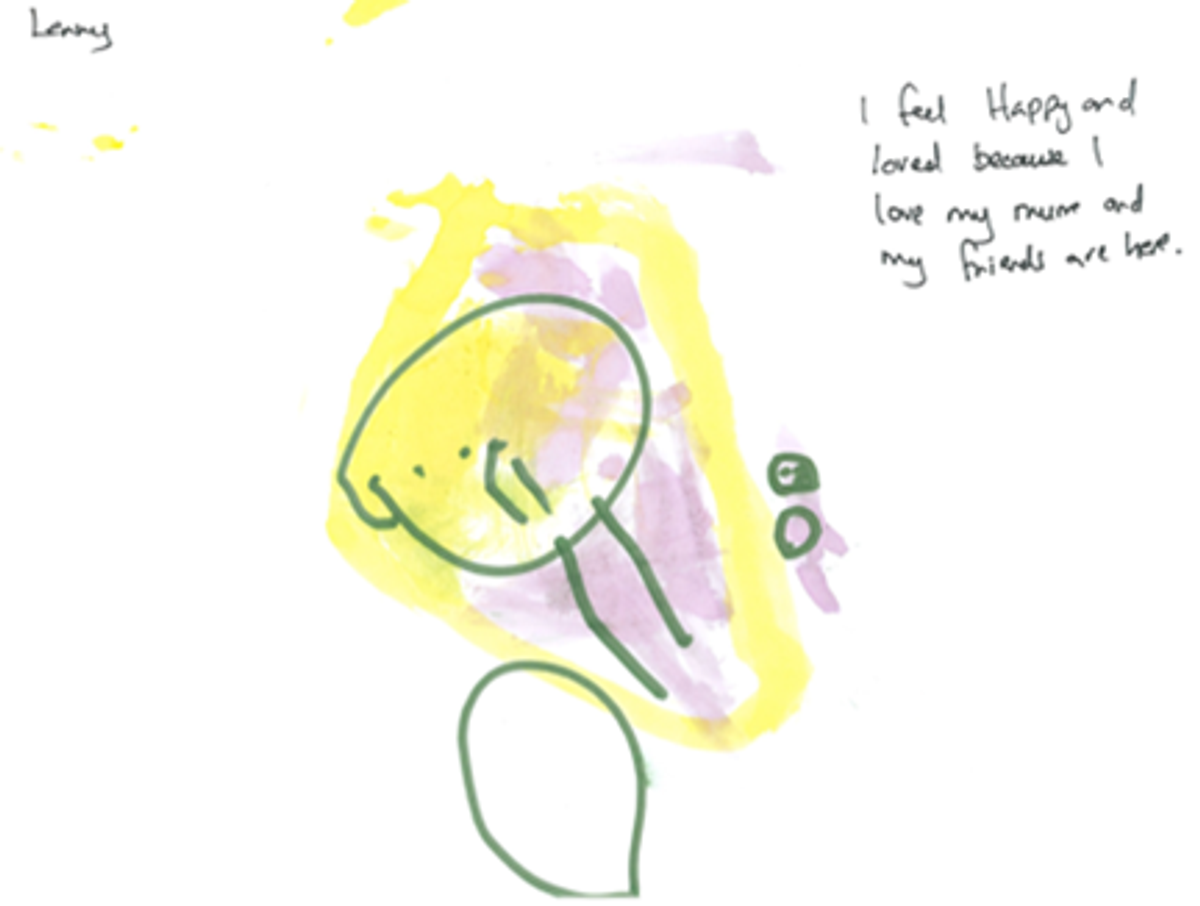GEKA McKinnon
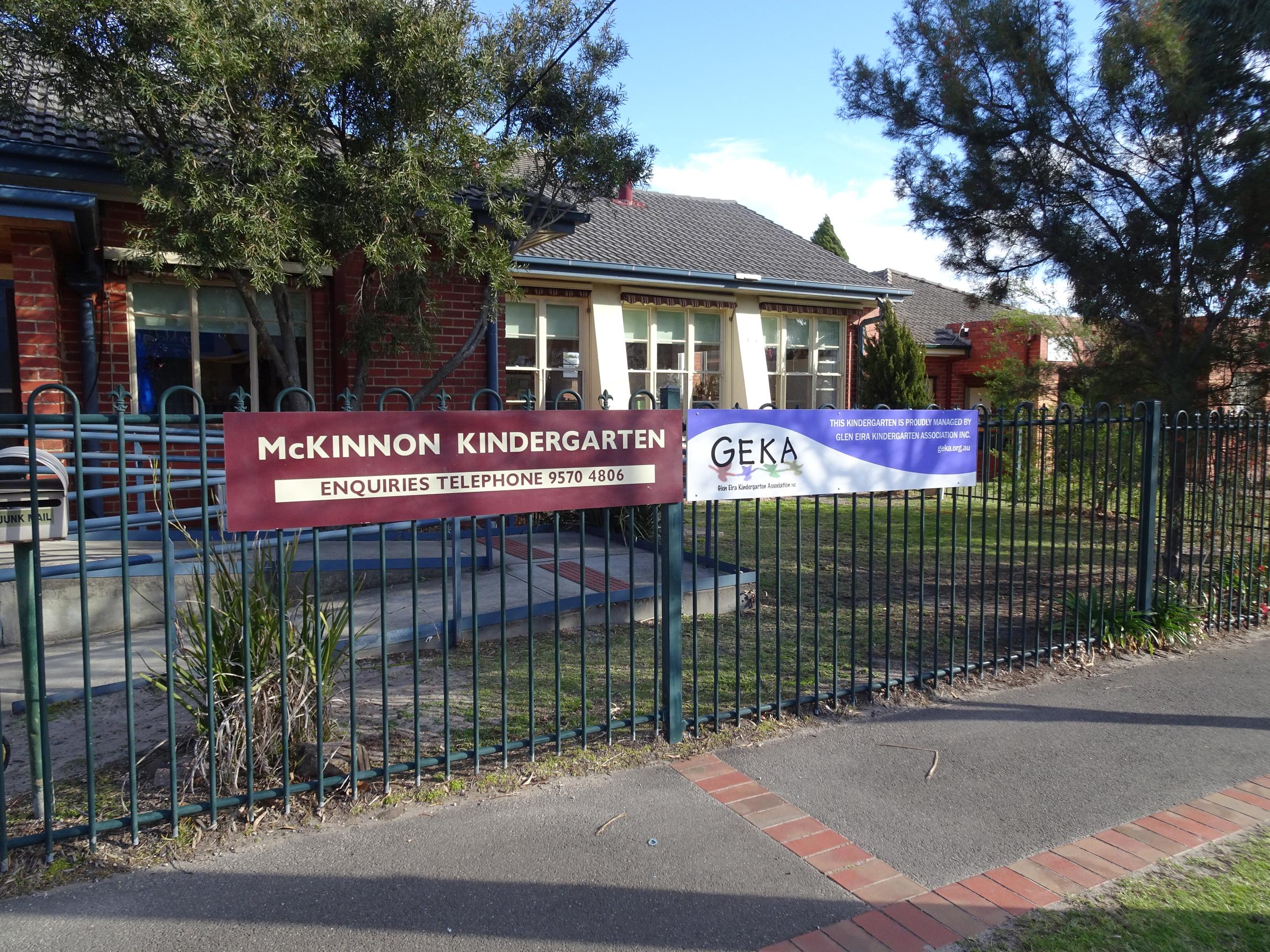
The Resilience Project
Being resilient improves wellbeing. The significance of ‘being’ and of the ‘here and now’ in children’s lives is well recognised in the learning frameworks. Belonging, being and becoming are about children being present within the moment, learning about themselves, developing relationships, and exploring the wonders of everyday life.
Being able to engage with The Resilience Project this year has allowed us to bring the fundamentals of gratitude, empathy and kindness, mindfulness, and emotional literacy to the forefront of our early childhood program. Bringing these elements into everyday practice has even allowed us as educators to be able to focus on being in the present moment, as sometimes we can get caught up in our day and lose connection with not only ourselves, but with others too. As we are all finding ways to become resilient and adapt to a new way of life in recent times, it has never been more important to prioritise mental health and wellbeing.
Our families at GEKA McKinnon Kindergarten have commented that since engaging with The Resilience Project journal at home they have created routines of having discussions about how they are feeling in the morning and talking about what their favourite thing at kindergarten, school and at work was at the dinner table. Some families have mentioned they have taken the time to start practicing short mindfulness meditations at home together with their children before bedtime. As parents and caregivers are a child’s first teacher, being able to engage in these sorts of special moments together at home can be extremely valuable to optimise emotional, social, physical, and cognitive development of your child, so that they are able to thrive in today’s culture.
Here are some wonderful reflections from the educators on how The Resilience Project has impacted the children’s learning:
Kangaroo Group
Our GEM (gratitude, empathy and mindfulness) journey began with recognising our emotions. This supported us all in developing an awareness of how others may be feeling. When a child on arrival put their name under sad, it provided an opportunity for educators or children to nurture, show kindness and empathise with the child. Alternatively, when a child placed their name in excited, they were able to express their gratitude for the experiences they were eager to engage in. The emotions morning ritual promoted connectedness within the group, creating friendships and influencing respectful behaviour.
Jo Elmer Early Childhood Teacher, and the Kangaroo Education Team
As part of our GEM Journey, we are discussing mindfulness (week 5 – mindfulness jar). We are thinking of the activities that promote kindness and good behaviour in the groups. The children are asked to crush herbs and smell herbs again and again and express their feelings. This activity is important because it reinforces and focuses the children’s concentration on the smells in the jar.
For example, child W said, “when I crush my herbs and smell the jar, I feel it smells like chicken dumplings”. Child E said “when I smell my jar, it makes me excited”.
This group activity shapes connections with each other through shared activity and expressing their thoughts and feelings.
Deepti Sinha, Educator for the Kangaroo Group
Interview with Matthew about feelings:
“Matthew, can you tell me about the feelings board?”
“Jo, when I come in, I find my name and put it on the board where I’m feeling”
“Matthew, do you always choose the same feeling?”
“No, sometimes I’m happy, sometimes I’m sad, sometimes I’m angry”
“When you are angry Matthew, what can you do to stop feeling angry?”
“I use my glitter jar. I shake it hard, I watch the glitter and feel calm.”
“Matthew, do you remember the colour monster story?”
“Yes, I made a colour monsters puppet.”
Koala Group
It has been so exciting to watch the journey we have taken as a group since implementing The Resilience Project. The weekly program has provided the educators with some fantastic tools which have been seamlessly implemented into our program. The children have shown a greater ability to identify and communicate their emotions. One of the favourite activities in our group has been active listening. Active listening has become a regular engagement for us, and the children look forward to sitting quietly and simply noticing the sounds around us. We all feel calmer after we take the time to stop, listen and share what we heard.
We have noticed children chatting with each other about their feelings and emotions which clearly shows us the program has supported children to develop the ability to identify, communicate and manage their emotions. This gives us confidence that children will be able to thrive in their personal lives and at school next year.
Merilyn Griplas, Early Childhood Teacher and the Koala Education Team
My favourite part of our GEM journal journey was putting a colour onto our emotions. It went beyond just a feeling but visually expressed how they felt. Within our group we saw children use the specific colour emotion paints to express how they were feeling, noting that a mixing of colours reflected feeling a number of emotions at once. Within the group, children connected with each other through their painting.
One child drew a lollipop, the reason being that she felt all the emotions. She was sad and angry, and these colours were in the centre and as her lollipop grew it was surrounded by yellow, the colour of happiness. By placing colour with an emotion, the children were able to see how their peers were feeling. This changed their behaviour as a group as they were able to see and help friends who were feeling sad or anxious. It was a great opportunity for children to see how educators felt also, strengthening connection within the group.
Joanna Palios, Educator for the Koala Group
Interview with Evelyn:
Educator: “What are you drawing?”
Evelyn: “A picture for Hazel, she will love a picture”
Educator: “What makes you happy Evelyn?”
Evelyn: “When I play with Hazel and my friends”
Educator: “What does it feel like when you are sad?”
Evelyn: “I feel surprised after I am sad. This morning I felt a little bit down”
Educator: “Why?”
Evelyn: “Not sure”
Educator: “How do you feel when you are down?”
Evelyn: “I feel sleepy, and my body moves around. Sometimes I feel a little frustrated and I can’t do stuff. If I feel frustrated, I feel calm and that makes me feel better”
Educator: “Do you like it when we practise sitting quietly, with our legs crossed and listen to the sounds around us?”
Evelyn: “My favourite is when we listen to the different sounds”
Possum Group
Since The Resilience Project has been implemented into our kindergarten program, we have engaged with mindful breathing exercises in the afternoon. As a group, we take a few moments to be still, relax and recharge our bodies after a busy day of play. You can tell children are present and focused while meditating. Once the children have completed their mindful breathing, you can clearly see that children feel peaceful, and the energy of the room is calmer. It has been especially beneficial to engage in mindfulness experiences with our group as we have a very energetic bunch!
Through implementing these experiences, we have observed the children look forward to taking a break and engaging in different breathing and mindfulness meditations. Practicing mindfulness will help support children with life-long skills to minimise stress and anxiety, increase focus and concentration, and equip children with practical coping strategies whenever life may get tough.
Zoe Georganakis, Early Childhood Teacher, and the Possum group education team.
Interview with Alastar (Miru):
“How are you feeling this morning?”
“I think I’m feeling happy and loved today”
“What has made you feel this way?”
“Because my dad played so many games with me in the morning, like the floor is lava.”
“Can you remember a time when you were angry?”
“When we played with the balloons outside the other day, and mine blew away over the fence and I couldn’t get it back.”
“How did you feel when you were angry?”
“I feel angry and sad at the same time. I was crying.”
“What is something that we can do to make ourselves feel better when we are angry?”
“Um, maybe calm down, breathe and have a hug.”
Kookaburra Group
The Kookaburra children at GEKA McKinnon Kindergarten have embraced the ideas and meaningful experiences from The Resilience Project. We are constantly discussing the importance of kindness and inclusion within our group by underlying how we can support other children to join in on our play experiences. We often hear the children either asking to join in or inviting others to join them in play, with a real emphasis on ‘’bucket filling”, courtesy of the story ‘Have you filled a bucket today?” by Carol McCloud.
Since starting the project, we have noticed the children are beginning to recognize their emotions they feel throughout the day. The children express and communicate to educators how they are feeling and if they require support the children can communicate this and therefore, we are able to respond to those needs promptly. This is of great importance moving forward. If we can encourage the children to identify their emotions now, then we would hope that in years to come they can express and communicate their feelings as young adults to others.
Sharon Cashmore, Early Childhood Teacher and Kookaburra Education Team
Interview with Anna:
“Can you tell me how you feel today?”
“I feel happy and excited today.”
“What makes you feel happy at kinder?”
“Seeing my friends and playing”“What makes you feel excited at kinder?”
“Seeing all the new toys I can play with”
“When we talk about mindfulness at kinder, how does it make you feel?”
"It makes me feel calm- when I sit down quietly.”
“How can we all be kind at kinder?”
“We can invite other children to play with us”
“What words can we use to do this?”
“Would you like to play with me? It makes me happy when I play with others.”
Wombat and Platypus Group
As early childhood educators, one of our roles is to support children's emotional development. Each day we find moments to intentionally encourage children to express and work through their feelings in a healthy way. The introduction of The Resilience Project has supported us to take our teaching to the next level by embedding concepts such as mindfulness and empathy into the program.
Our three-year-old group have delighted us with their engagement in mindfulness experiences, which help to create a sense of calm within the group. When encouraged to pause and focus on their breathing or immediate surroundings, the children are wonderful at focusing their attention and expressing what they can see, touch, and hear around them.
Megan Wiwatowski, Early Childhood Teacher
I believe the principles of gratitude, empathy, mindfulness, and emotional literacy are such powerful tools to be embedded in children at a young age. As a result, children develop a sense of awareness on how to build positive relationships with others, and in return have a positive impact on the wellbeing of the individual and others. By teaching children these principles at kindergarten, we impart such powerful tools for them to have a great start at school and in many different social settings.
Gurmeet Kaur, Educator for Wombat Group
As an early childhood educator, I felt the introduction of The Resilience Project at GEKA McKinnon Kindergarten welcoming and rewarding. The children were receptive and enthusiastic about being ready to learn and engage in rich and meaningful ways. The activities prepared for the children gave them an understanding about gratitude, empathy, and mindfulness.
We set up a mindful glitter jar activity for the children, giving them an opportunity to demonstrate a basic understanding of active, mindful listening. As a group the children decided to make three glitter jars; yellow for the happy emotion, purple for the loved emotion and teal for the calm emotion. The children enjoyed shaking the glitter jars, watching the glitter swirl around and waiting patiently for the glitter to settle at the bottom.
Harriet: “When glitter goes to the bottom you feel relaxed, clam and happy.”
Ava: “Glitter at the bottom, I feel happy and when glitter goes everywhere”.
Liz Polymeropoulos, Educator for the Wombat Group

